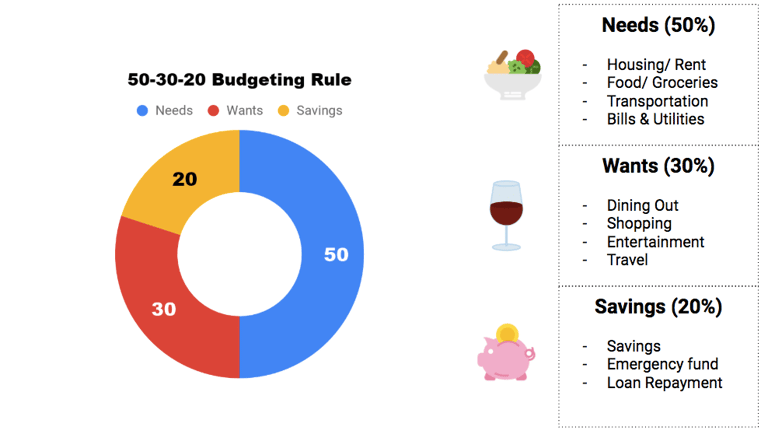Your Simple Guide to the 50/30/20 Budget: Make Spending Easy
Ever wonder where your salary disappears every month? You’re not alone! The 50/30/20 rule is a super simple way to make sense of your money—and still enjoy life. Let’s break it down together.


What is the 50/30/20 Rule?
It’s a simple formula to manage your monthly income:
· 50% for Needs
· 30% for Wants
· 20% for Savings or Debt
You don’t need to be a math genius. This rule just helps you know how much to spend in each area.
How Does It Work? (With Indian Example)
Imagine your take-home salary is ₹40,000 per month.
· 50% for Needs: ₹20,000
(Rent, groceries, transport, bills, EMI)
· 30% for Wants: ₹12,000
(Dining out, shopping, Netflix, trips with friends)
· 20% for Savings/Debt: ₹8,000
(SIP, emergency fund, repaying loans)
Real Example: Meet Meera
Meera earns ₹40,000 monthly. She uses the 50/30/20 rule and notices:
· She used to spend ₹17,000 on wants!
She swaps some weekly restaurant visits for homemade meals, and moves the saved amount to her savings.
· Her emergency fund starts to grow without stress, and she still enjoys life.
Why the 50/30/20 Rule is Great
· Easy to remember—no complicated math.
· Flexible if your rent is a bit higher or lower.
· Keeps you aware of spending and saving without feeling deprived.
Quick Steps to Try It This Month
1. Calculate your monthly income after tax.
2. List all your “needs,” “wants,” and amounts you can save.
3. Match your spending to the 50/30/20 breakdown.
4. If something doesn’t fit, adjust—maybe move from “wants” to “needs” or “savings.”
Key Tip
Don’t stress if you can’t follow the rule exactly every time. The idea is to get started, notice your money habits, and plan for your future.
Ready to try the 50/30/20 rule?
Write down your numbers, follow for one month, and comment below how it goes! Every small step brings you closer to financial freedom.
Keep following Finclimbblog for more simple and practical money ideas, made just for you!




